Tranquillity, relaxation, beautiful weather, endless beaches… what else can we ask?
Our friends, Maria Jose and Cesar have an apartment on the beach of Islantilla, 46 kilometres from Huelva.
So many times they have encouraged us to go there but is has always been difficult to arrange. This time, however, the perfect opportunity has arisen, coming back from Portugal. So we popped in, for a couple of days and we eventually stayed three!
This place is a Spanish holiday resort but not the typical one we are used to. The houses in this place have actually been built on a golf course (Gary has dedicated a post to this area), very bizarre!
Although we play golf in the UK, we have not tried whilst we have been here. The amazing, large, stunning beaches have a lot more to offer. The next day after we arrived in their apartment, we drove to Isla Cristina, the nearest village and have a picnic lunch on the ‘playa del Caiman’ (Caiman beach) sitting on a marsh, with lots of birds around. Gary was fascinated.
We are so glad we have come at this time of the year. No one is around. Not one soul. The beach is entirely for us.
We don’t really seem to spot where the beach ends. We take a panoramic as the photo doesn’t do it justice.
After lunch we run to the beach. Gary went off to do a bit of bird watching.
This place is incredible and you can get really close to the birds. There is no need for hides, as the birds are separated by small rivers of water.
The first thing I hear, the plaintive cry of the curlew. Then I get to see them, three or four. I never realised how big they were, and those long curved bills. In the distance a cluster of largish white birds, is it an egret, its posture is different, its head deep in the water. A faint hint of yellow around the neck. It pulls its head out of the water and reveals a ridiculously shapes bill, a spoonbill. Storks fly in to look for fish or frogs. A small grey heron like bird I cannot find in the book. And then I start to identify some of the birds of my youth, ones my grandparents would reveal, shoving binoculars into my hands; ringed plovers, turnstones, and sanderlings. Gulls; herring, the larger black backed, common and terns. Others I remember; standing high on bright orange legs, the redshanks, with long bright matching bill and of course the greenshank.
Wading spoonbills, taken through the binoculars. GDR
Many gulls.
and a stork.
I just go for a walk along the beach.
In the distance, some people seem to be standing in the freezing waters of the Atlantic.
I start coming up with lots of questions: what are they fishing for?, how long have they been here? How much do they catch in that time? Do they sell it afterwards and if so, for how much? Has it been a good day today?
I can see a couple of young guys getting out of the sea. “They will be my victims”, I think![]() . I go and ask them.
. I go and ask them.
They kindly answer all my questions:
They fish ‘coquinas’ a sort of cockle.
They have been here for a couple of hours.
They have caught only a couple of kilos today. By the look of his face, it has not been a good day.
They sell them to people who would sell them to supermarkets afterwards.
For €5 a kilo.
One question I didn’t ask is how they fish this type of shellfish. They carry a net which is like a bucket on the end of a stick, this is jiggled along the seabed.
I have one more question but I thought I was getting too inquisitive. “Do you declare the money you earn?” Who knows. They may be just locals, who have spare time from their normal job (or not!) who come down to the beach, in a nice afternoon, to earn a bit of pocket money.
Gary seems to enjoy his bird watching. Good, I carry on with my educating walk.
This time, I come across another guy who also seems to be searching for something, this one from the sand. I approach to ask him the same set of questions I asked the guys before.
“Hi, do you mind if I look?” (believe me, I didn’t mean his arse!)
“Can I ask a few questions”? “Of course you can” he says, without even looking at me. He doesn’t give a shit, he just wants to finish his job and go home.
He fishes ‘almejas’ (clams).
He has also been here for a couple of hours.
“So far, I have caught a couple of kilos today, not bad” he says. He sounds happier than the young guys who were fishing cockles earlier. Maybe it is more difficult to fish clams so two kilos is a pretty good harvest; or maybe there are more clams than cockles at this time of the year, or he is just simply more optimist that then young guys.
He also sells them to locals who would also sell them to supermarkets afterwards, for €10 a kilo. “Better yield than the coquinas” I thought.
I am not surprised, it is a much harder job. Clams bury themselves in the sand to avoid being eaten by hungry birds. So digging them out is the only way to find them. “You must end up with backache” I tell the guy. “One gets used to it” He responds, again, without looking at me. I thank him and leave him get on with it.
I continue to walk along the dunes, walking on a carpet of shellfish.
Perhaps it is time to take out my seashore book.
Seashore life is something I have got into this trip. It started like a game, trying to spot the species described in the book, and it has now become like a proper hobby. I can now remember the species easily and I am able recognise them later on.
My seashore life book, not only does it talk about animals but also about plants that grow on cliffs, rocks, shingle, saltmarshes and sand.
My interest for plants was born back in the UK when we started to grow our own vegetables in the back garden. Since then, I try to guess what vegetables are grown in different regions and countries we visit. And I am now doing the same with the vegetation we see when walking or trekking.
I guess this is not different from the passion that Gary has for birds. I like plants because they lift my mood. Who does not feel animated when the spring arrives?
However, I am most interested in the functionality and practicality of the plants rather than in the collection and decoration of gardens and patios. Vegetables have a clear use, to feed us. Equally, wild vegetation feed animals. Plants are the first link in the ecosystem of life. Without plants, we wouldn’t exist.
Ok, that is my philosophical argument of the day. Let’s now continue the walk.
As well as my seashore book I bought in the UK, I also have a guide to the local flora that I picked up in the tourist information centre. This guide is in Spanish, so I don’t think I’d be able to provide the equivalent names in English.
Spotting plants at this time of the year is rather difficult. Most plants flourish between March and September. Some of them even die out during Winter and come back to life in Spring, like hibernating reptiles. However, the warm weather has caused some plants to keep flowering even now, in January.
Like ‘El Alheli de Mar’
or el ‘Cuernecillo de Mar’
Not sure what this is. My guess is that it is part of the ‘cardo marino’, some sort of sea bush. This is when I am starting to enjoy myself, when I make guesses and find out that I am right! So far, I have been unable to cross check this one either with my seashore life book or with my Spanish guide, unfortunately.
Gutweeds are spread over the shore. This type of weed is very common.
‘Azucena de Mar’, although this one has not kept its flowers, shame! It is amazing how these plants can survive just in sand.
The next day, we did a walk from Islantilla to Isla Cristina. The walk, between two to three hours, is called the Camaleon Route. Apparently, lots of them live around here. They can be spotted easily in Summer but not at this time of the year as they are hibernating. What we saw of course, were eucalyptus. A foreign specie that dominates the shores of the dunes in this area, as well as Portugal.
Once again, Maria Jose and Cesar, thank you very much for the use of your apartment and the three days break this gave us to our travels. We do understand why you like this area so much. I bet the boys really love it!.
See you very soon, when we are back in Guisando.
SM

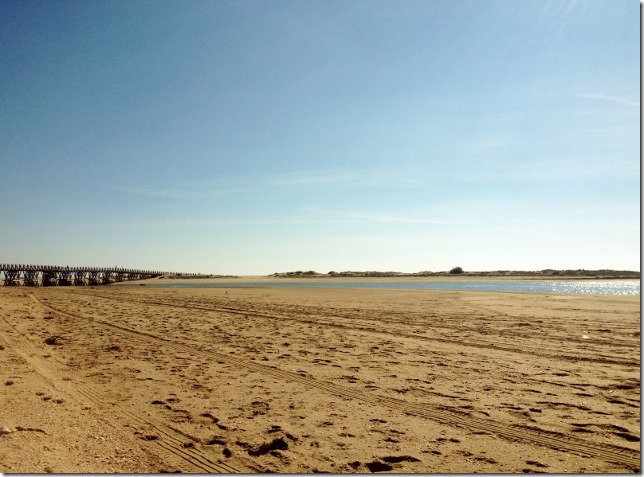
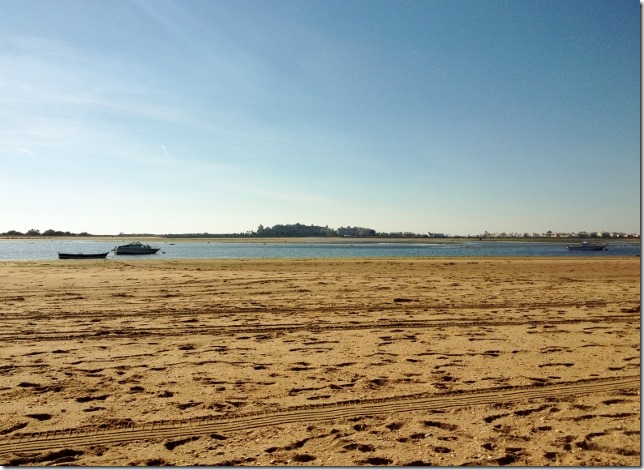

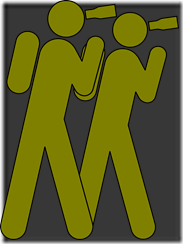
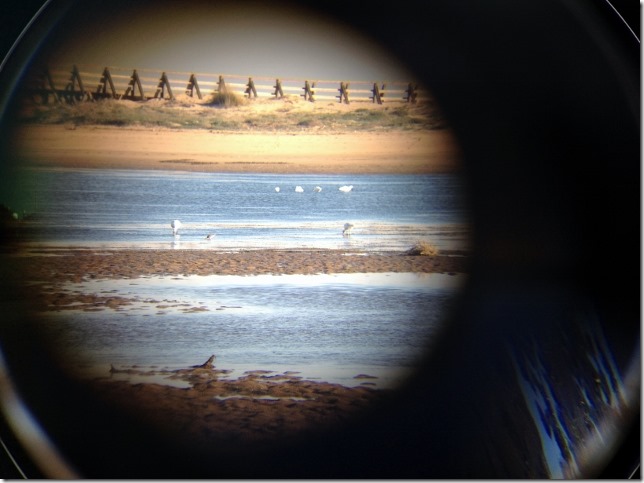
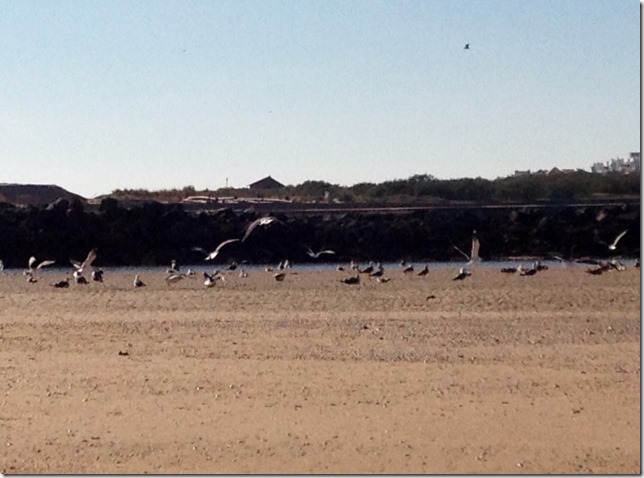
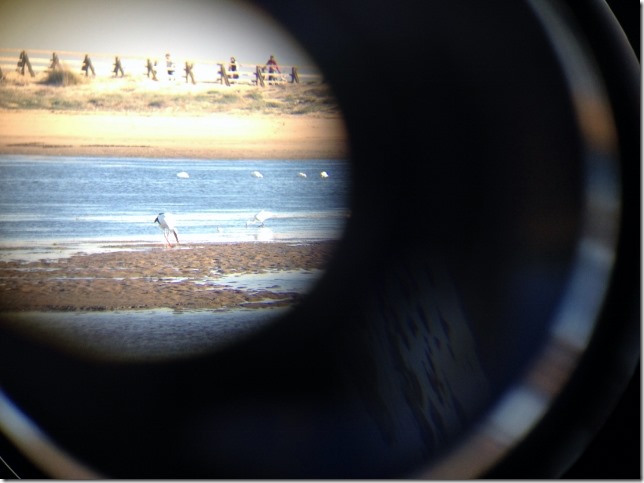
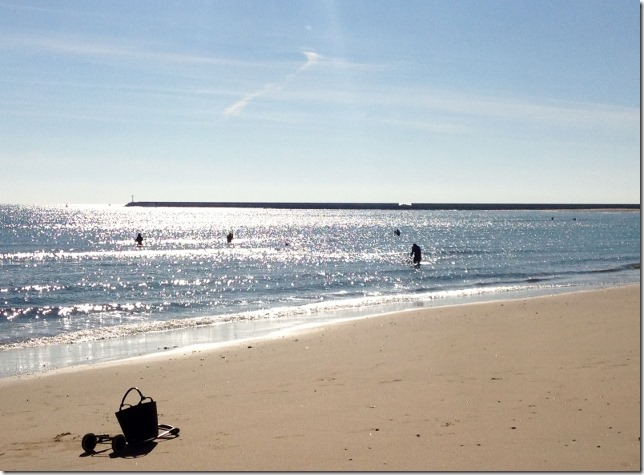
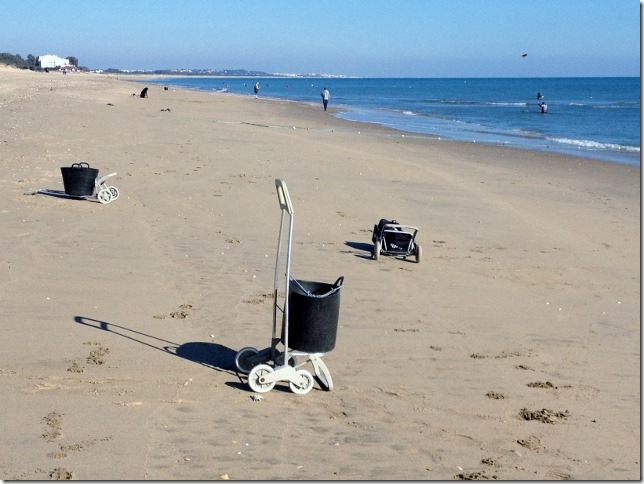
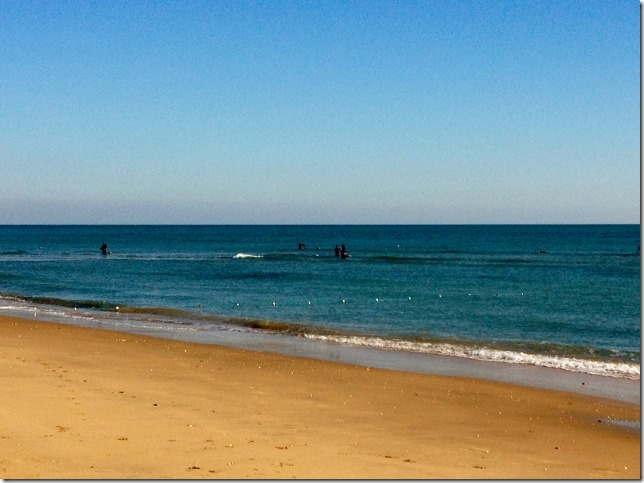
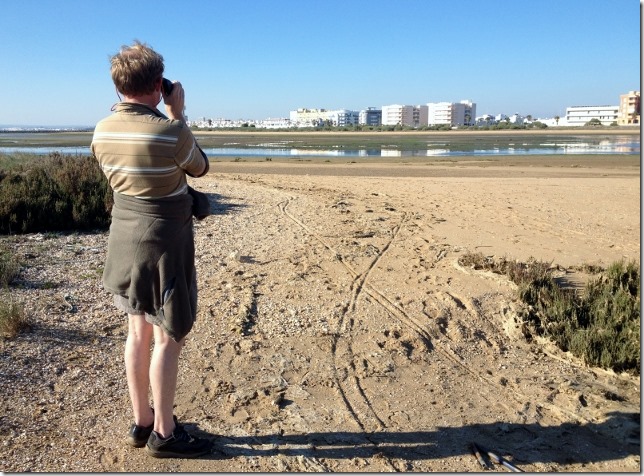
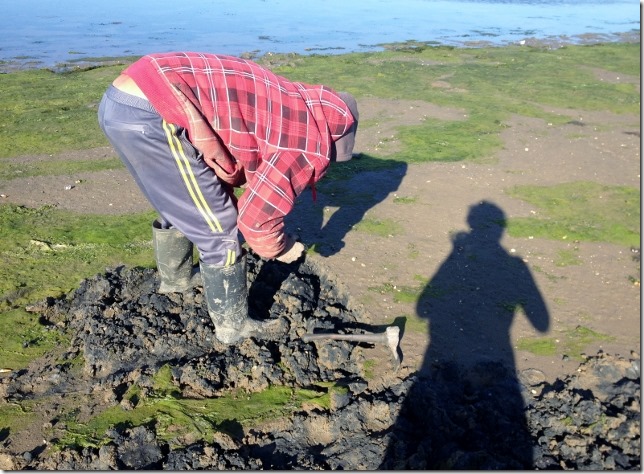
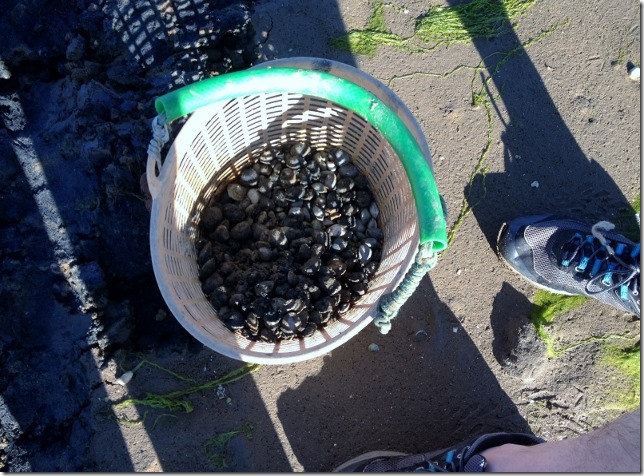
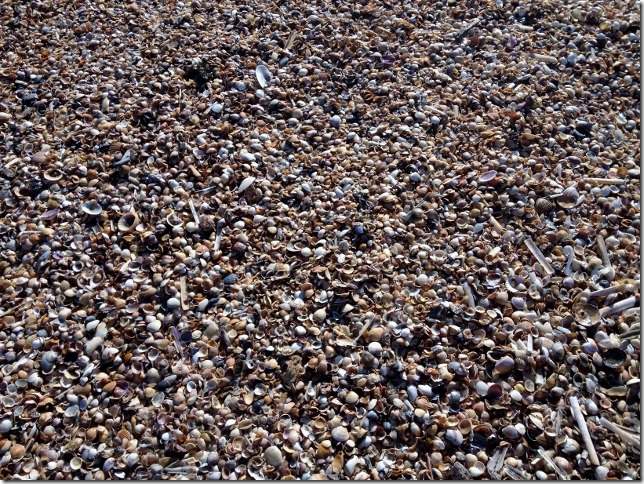
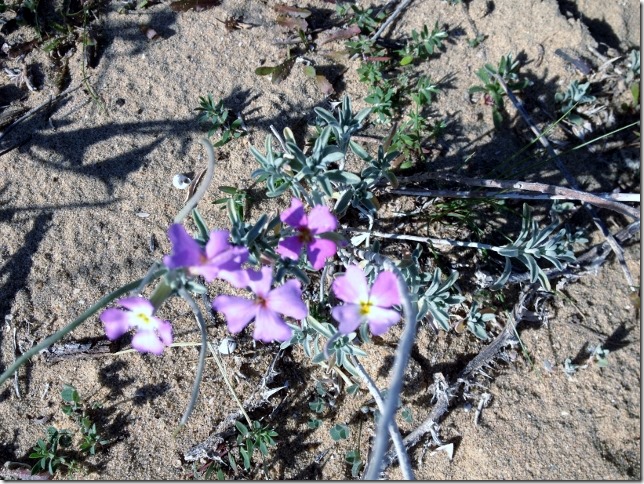
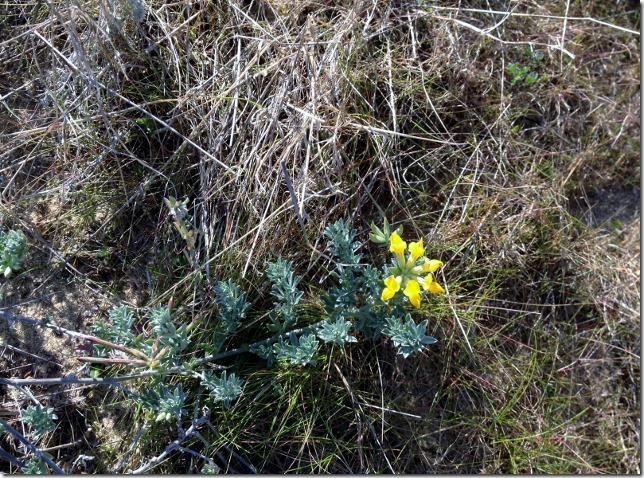
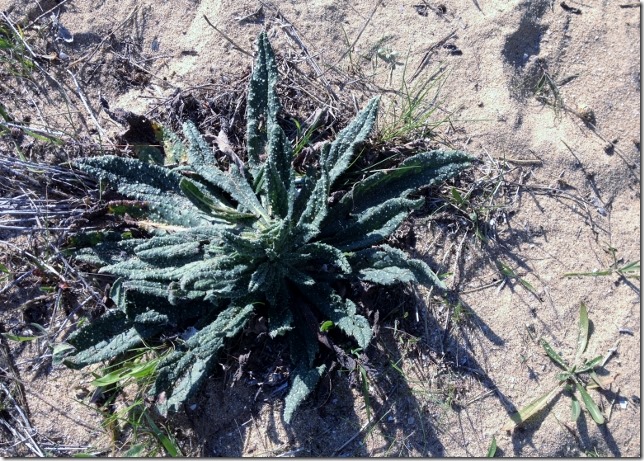
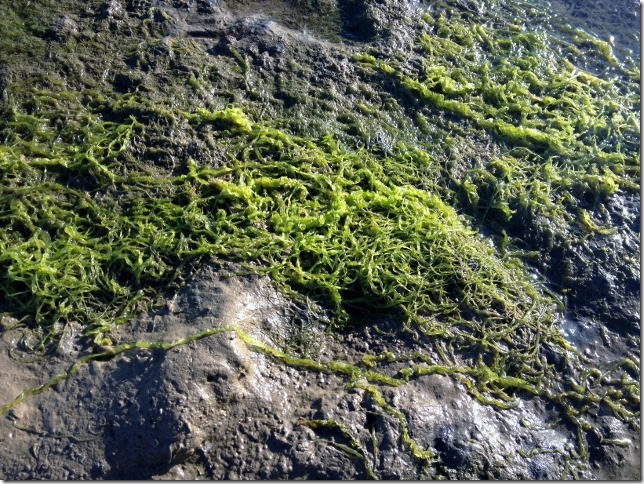
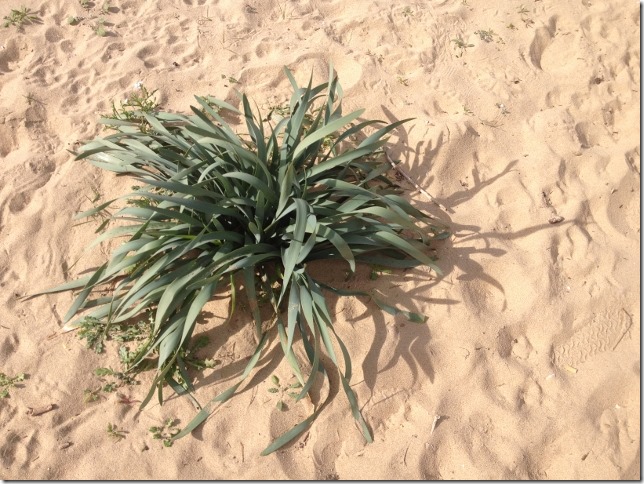
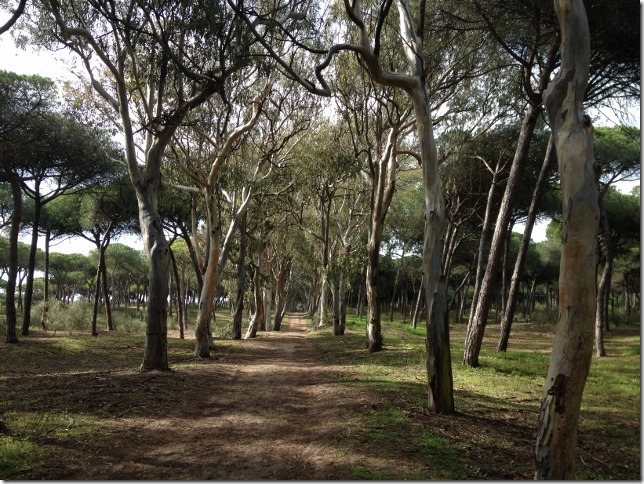






Bonitas playas las de Huelva .
Creo que te acordaras aun cuando estuvimos en Punta Umbría , iban muchos vendiendo las coquinas por la playa , en todos los chiringuitos las ponían de aperitivos. Grandes recuerdos de ese verano,¿ No crees?
Preciosas. Tengo buenos recuerdos de ellas como bien dices. De aquel verano que pasamos en Punta Umbria